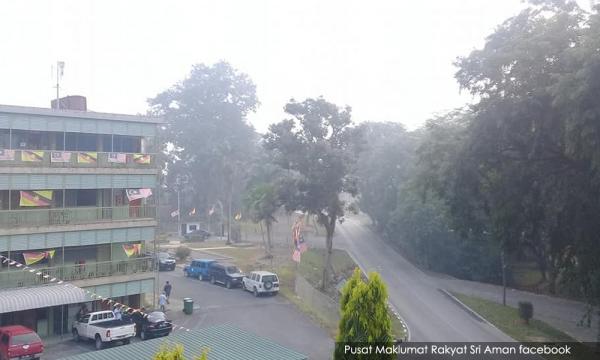The Environment Department has denied that its Air Pollutant Index (API) is inaccurate, saying its measurements were made using methods that are based on international standards.
“Some members of the public have also been referring other sources for API readings, which are found to be displaying readings on the concentration of PM2.5 particulates in micrograms per cubic metre (μg/m3; 1μg = 0.000001g) whereas the concentration of particulates at a particular time is not the API.
“There are also concerns that these sources use instruments and methods that are not verified by any competent body.
“Therefore, the DOE stresses that the API displayed (on DOE’s website) is correct and there is absolutely no deception because the air quality monitoring system in Malaysia is verified and based on international standard protocols,” the DOE said in a statement today.
PM2.5 refers to small particles suspended in the air that measure less than 2.5 micrometres (0.0025mm) in size. The small size poses health risks as it can enter deep into the lungs, and potentially enter the bloodstream.
READ MORE: Why is API so low when it's a post-apocalypse movie outside?
The DOE said its statement that the API is calculated based on measurements of six air pollutants. Its website lists the six as PM2.5, PM10, sulphur dioxide, nitrogen dioxide, ground-level ozone, and carbon monoxide.
An API sub-index is then calculated using a formula based on a time-average reading of each of the six readings. The highest sub-index is then chosen as the API reading.
READ MORE: API readings fudged? Let's compare with S'pore, Thailand
“During haze, PM2.5 is usually the dominant air pollutant and thus chosen to be the main index because its number becomes much higher than the sub-index for other pollutants.
“The (measurements for the) concentration of PM2.5 would be averaged for the 24 hours prior, taking into account of the public’s exposure to health (risks) and the formula for the calculation is based on standards set by the US Environmental Protection Agency (EPA),” the DOE said.
For the record, Malaysiakini had asked the DOE for the formula for the calculation of the PM2.5 sub-index on Sept 18 but has yet to receive a response.
In addition, the EPA not only publishes its equivalent of Malaysia’s API (termed Air Quality Index - AQI) but also uses a weighted average (termed NowCast) to give more weight to the most recent air quality measurements in its calculations.
“The NowCast is EPA’s method for relating hourly data to the AQI. The NowCast is designed to be responsive to rapidly changing air quality conditions, such as during a wildfire.
“The NowCast calculation uses longer averages during periods of stable air quality and shorter averages when air quality is changing rapidly.
“The NowCast allows AirNow’s current conditions to align more closely with what people are actually seeing or experiencing.
“This gives people the information they can use to protect their health when air quality is poor, and help them get outdoors and get exercise when air quality is good,” the EPA explains on its website on air quality.


